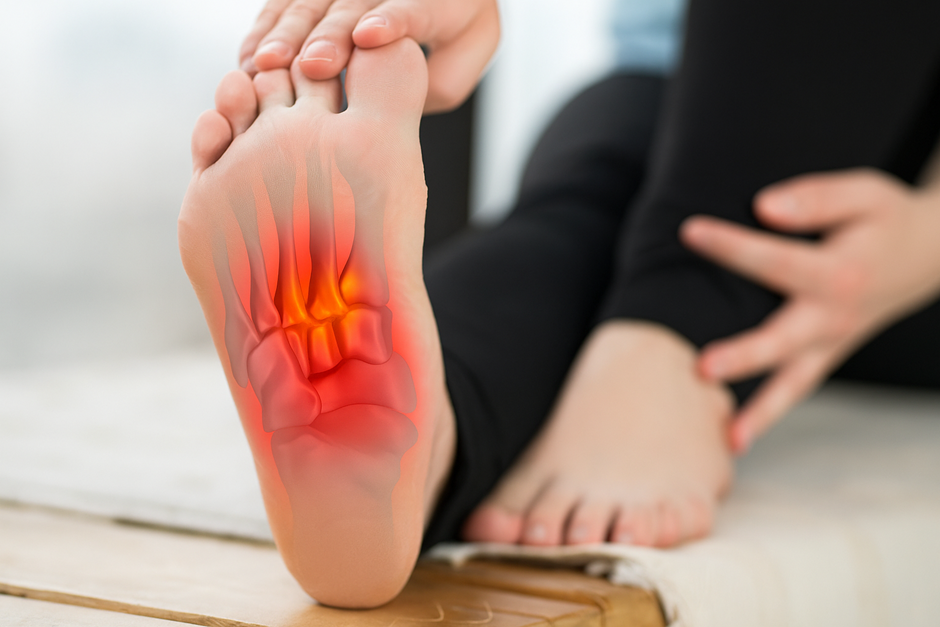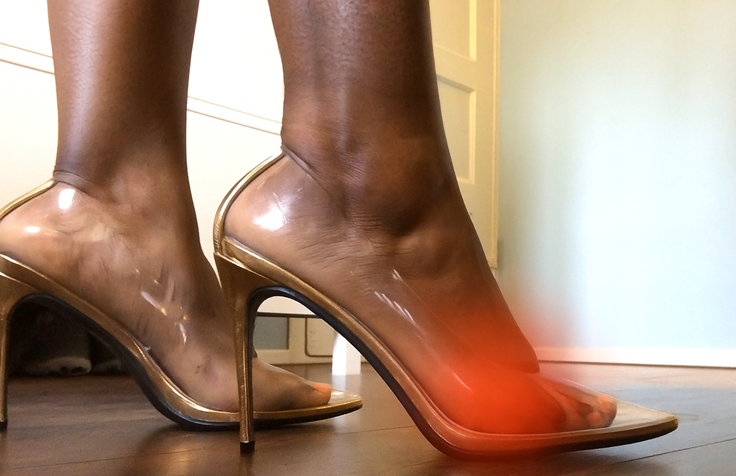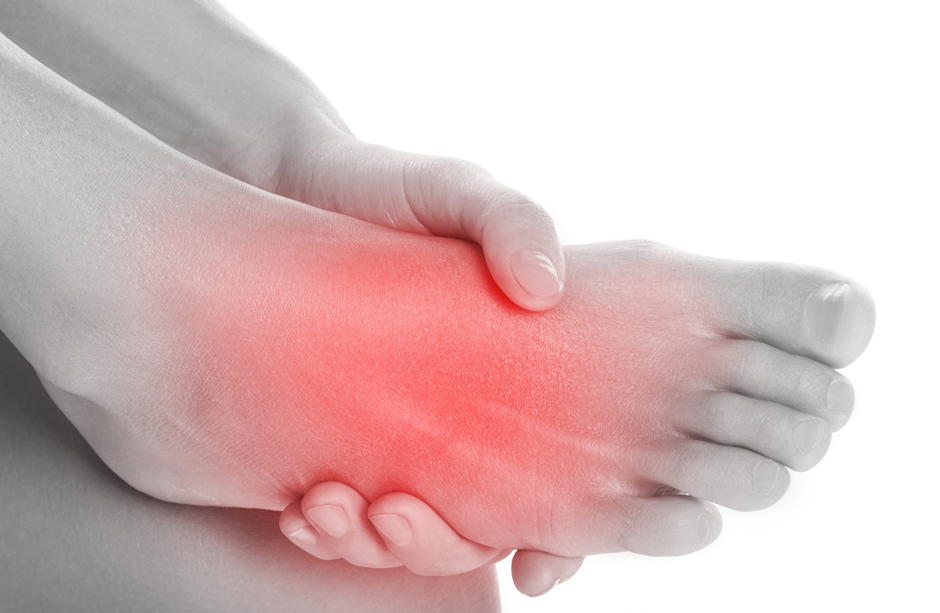Getting Started With Stride Soles
Welcome to the Stride Soles family! We are so glad you are now able to enjoy the benefits of custom orthotics!
You might be a bit confused of what comes next, so below we have our guide to getting started. As always, if you have any questions please do not hesitate to reach out to us at team@stridesoles.com!
Getting Started Steps
1: Remove your existing insole
Note: If your shoes do not have existing insoles, you can skip this step
The first thing you must do is pull out your existing insole that often came with your shoes. While most of the time they should be pretty easy to pull out, in some occasions they may be glued down or just hard to remove. In this occasion do your best to pull the insoles out, as otherwise you may run into a situation where your feet may feel pressure against the top of the shoe as there is less space.
2: Place orthotics in your shoes
Now that you've removed the existing insole, you can simply slip in your orthotics into your shoes. Make sure that you are placing your left insole in your left shoe, and vice versa. If you are unsure which is which, the underside will say "L" and "R" to help you.
3: Cut Down Orthotics (Optional)
If your orthotics are not fitting 100% in your shoes, you may have to take scissors to cut a bit down. This is completely normal as we err on the larger size when making orthotics. Please watch this video to help you cut down your Stride Soles.
Tips for Breaking In Your Stride Soles Orthotics

The break-in period simply refers to the time it takes for your feet, legs, and entire biomechanics to adjust to the new support provided by the orthotic. Because this support is new and somewhat alien to your biomechanics, you may feel a few things.
To ensure that you quickly and safely break in your new orthotics, here are some helpful tips that you should follow:
Start Gradually
This is an important first step in breaking in your new orthotics. For starters, on the first day, only wear the orthotics for between 1 to 2 hours. For the next few days, you can increase the length of time you wear it by an hour or two depending on how you feel.
By weeks 2-3 you should be able to wear your orthotics comfortably all day.
It is important that you pay attention to how you feel and immediately stop wearing the orthotics if the pain persists. You should also talk to Stride as it may just need an adjustment.
Delay Intense Workout
It’s best to hold off on any serious workouts until you’ve fully broken the orthotics in. You can consider using it for workouts when you are able to have them on for between 5 to 8 hours at a stretch.
Pain Medication
While this may not be what you will expect as a way of breaking your orthotics in, it can help manage the mild pain and discomfort. Remember that this is just for mild pains and discomfort as you are not supposed to be having persistent pains and discomfort.
These tips will help you with the break-in process but you must always listen to your body. If you feel that the pain is getting worse or not reducing, then it may be best for you to reach out to us. You should certainly stop wearing the orthotics if you feel the pain getting worse.
What You Might Feel
When your feet’s biomechanics is introduced to the new support and alignment, you may notice the following:
Some Pressure and Initial Discomfort
This is to be expected as the new support begins to move the structures into better alignment and balance. You may therefore notice that some areas, like the arch, forefoot, and heels, may experience slightly increased pressure. This can result in some discomfort mainly because of the new feeling. As your feet get accustomed to this new (correct support and alignment), the pressure and discomfort will reduce.
A good example is a new orthotic meant for flat feet. The first time you use it, you will feel some pressure around the arch. This is because the fallen arch is now being gently lifted by the orthotics as it seeks to provide the missing support. You will therefore feel the support as a type of strange pressure. You will however get used to it in no time.
Temporary Pain
When using Stride Soles for conditions such as bunions or plantar fasciitis, it is not uncommon to feel some pain, especially since there was already existing pain which the insert is meant to correct. Of course, the existing pain will not disappear instantly but should reduce as your feet begin to adjust to the orthotic.
One important thing to note here is that any persistent or worsening pain is not normal. This may mean that the orthotics are not right and may require some adjustment. So, the pain should reduce as your feet adjust to the new support.
Muscle Soreness
Remember how you can experience muscle soreness when you begin a new exercise routine that works some muscles that were previously not being engaged? Well, something similar happens here. When you start using a new orthotic insole, you may begin to feel some soreness in the muscles of your lower back, shins, calves, and feet.
This should be expected as the muscles are exposed to a new experience and operation. As the muscles begin to adjust to the new support, the soreness should reduce and eventually stop.
Change in Gait
This is normal and should even be expected. If you’ve been having any kind of foot condition, the chances that it affected your gait will be high. This means that you’ve been walking with a poor gait for some time.
When you get orthotics that will correct the underlying problem, it will also correct the gait which will feel strange. Remember, your gait has been poor for a while so you are used to the poor gait. Now that it is being corrected and you are walking with a better gait, it will feel strange until you get used to it.
In general, expect to have a period of between two to four weeks to break in your new orthotics. The exact length of time that it will take will depend on factors such as the condition being treated, the orthotics itself, how often you use it and the person using the orthotics.
Care Instructions

Taking care of your Stride Soles is important if you want them to serve you for as long as possible. To do this effectively, below are simple care instructions that you can follow:
Regular Inspections
Regularly inspecting your orthotics is an important aspect of taking care of them. These inspections are particularly important during the break-in process.
While inspecting them, look out for cracks, signs of wear, paddings that are thinning out, deformities, and anything out of place.
Wear Socks
Wearing socks can help reduce moisture, smell, and friction. It is therefore a good practice to always wear socks to ensure that your feet don’t get sweaty, transferring moisture and smell to the inserts.
Air them Our After Use
After use every day, be sure to air them so they can get completely dry. This will prevent any buildup of moisture that can encourage the growth of bacteria and bad smell.
Store Properly
Your orthotics should never be stored in direct sunlight or close to a heat source as this can damage the material. If you can, keep them in a breathable bag and store them in a cool, dry place. Be sure that they are completely dry before you store them.
Cleaning Orthotics
Just as with your other footwear, your orthotics will require some cleaning to keep it fresh and clean. Some of these cleaning will be done daily, while some others will be done weekly or monthly.
Daily
Some simple cleaning routines that you can do daily include:
· Taking them out of the shoes and wiping them down with a damp cloth with very little soap. This will remove any dirt or grime that may be on the surface. This cleaning should be light to avoid soaking the orthotics in water.
· Drying them completely before taking them in. Never use dryers or other heat sources as these can damage them. Allow them to dry naturally.
Weekly or Monthly
How often you will carry out this periodic cleaning will depend on how frequently you use them. Carrying out this deeper cleaning will involve:
· Using a mix of warm water and mild dish washing soap, rub gently with a sponge or soft cloth to remove visible stains.
· Rinsing out the soap under light water if you own waterproof orthotics. If they are not waterproof, cleaning the soap residue with a damp cloth.
· Disinfecting for odor by sprinkling baking soda over them and cleaning them out after waiting for a short while. You can also use highly diluted rubbing alcohol on a cloth to rub out or prevent odor. To be sure that this won't damage the material, first test it on a small part.
· Drying them completely them completely without any artificial heat source. This will prevent the growth of mold, mildew, and bacteria.
To ensure that your orthotics last for long:
· Do not machine wash
· Do not use harsh chemicals
· Do not soak in water
FAQ
How long does it take to break-in a new set of orthotics?
Breaking in your new orthotics will take anywhere from 2 to 6 weeks. The exact time will depend on the type of orthotics, the condition being treated, and the person using them.
Can I wear my new orthotics all day?
No! You shouldn’t wear them all day when you first get them. You will need a break in period for your feet to get used to them. For the first day, wear it for between 1 to 2 hours. You can begin to increase the duration by an hour or two each day while taking note of how it feels. It should take you between 2 to 6 weeks to get to the point where you can wear them all day.
Is it normal to feel some pain and discomfort when I just start using orthotics?
Yes! It is normal to feel some pain and discomfort when you first begin to use your new orthotics. This is because your feet are trying to adjust to the new support and alignment that the orthotics now offer. The pain and discomfort should be mild and reduce with time. If however the pain is severe and doesn’t reduce with time, then consult your podiatrist.
Can I use my orthotics with any type of footwear?
Your orthotics should be used with shoes that have proper structure and have enough support. This will enhance their ability to provide the support you require. Do not use them with high heels, flip flops, and worn shoes. You should also check to see what type of shoes your orthotics are specifically designed so you can be properly guided.
My orthotics are slipping and squeaking in my shoes. What does this mean?
It may mean that they are not the right fit for you or the shoes you have them in. They may require some adjustment for them to fit or you may just need to change the shoes. Check to see if the shoes have removable inserts, remove them before inserting the orthotics and try again.
How can I tell if my orthotics are working?
If your orthotics are working, the pain and discomfort that made you get them in the first place should be reducing. If you continue to feel the symptoms after 4 to 6 weeks, then there’s an issue that requires attention. Talk to your podiatrist or the manufacturer if they offer feedback opportunities.
How long do orthotics last and how often do I need to change them?
How long your orthotics will last will depend on the type of orthotics and how often you use them. On the average, orthotics will last 4 to 6 years.
Can I machine wash my orthotics?
No you can’t machine wash or dry them as this may damage the material and warp the orthotics.
Can I hand-wash my orthotics?
It is best to clean them with a damp cloth and mild soap. The materials are too delicate to be exposed to too much water and harsh washing chemicals. Clean them with a damp cloth and allow them dry in a well-ventilated space. Do not dry them with any artificial heat source.
Can someone else use my orthotics?
No. These are highly personalized devices that work best for the person they are designed for. They will therefore be better off getting their own.
What’s the difference between over-the-counter orthotics and custom orthotics?
OTC orthotics are largely generic in sizing meaning that it may be difficult to find the perfect fit. They are therefore best used for mild to moderate symptoms. Custom orthotics, like Stride Soles, are specifically made to the exact specifications of the patient. This means that they are designed to address the exact problems that each foot may have. This makes them ideal for more severe symptoms.
My orthotics don’t fit my shoes. What do I do?
Check to confirm that your orthotics are not designed for specific types of shoes. You should also see if your shoes have removable insoles. If they do, removing them can create more room for the orthotics to fit. You may also just solve the problem by choosing a different type of shoe or checking to see if your manufacturer can adjust them. Some orthotics are even trimmable, allowing you to trim them down to your preferred size.
Can children also wear orthotics?
Yes, children can use orthotics to treat foot conditions like flat feet and issues with pronation.
My orthotics are smelling. What do I do?
Check to see if they are dirty. If they are, clean them with a damp cloth and mild soap. Allow them dry completely before storing or wearing them. You can dust them with baking soda, allow the baking soda stay for a while before cleaning them. This will prevent smell. Always store them in a cool dry place after they are completely dry.




